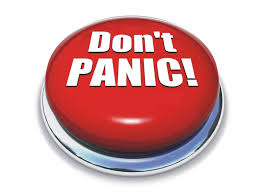 Meaningful Use Dropout Rate – Let’s Not Panic Yet
Meaningful Use Dropout Rate – Let’s Not Panic Yet
Over the past few weeks there have been quite a few articles posted in various EHR publications/blogs written to sound the alarm about the “Meaningful Use Dropout Rate.” The articles report dropouts between 2011 and 2012 at varying rates ranging from 17% to 21%. All seem to be referring exclusively to participants in the Medicare EHR Incentive program.
I’d like to suggest that before we panic about any meaningful use dropout rate and the sustainability of meaningfully using an EHR, we consider three key points:
1. Healthcare reform takes priority: An Eligible Professional or Hospital who was able to successfully demonstrate meaningful use for 90 consecutive days for their first year of participation in the EHR Incentive program in 2011 could very well have skipped a year or been unable to meet the full-year participation requirement for 2012. This does not necessarily mean they are a meaningful use dropout forever. In these times of healthcare reform, providers have multiple competing priorities, and Meaningful Use may have found itself a little lower on the list for some this year. But because healthcare reform brings with it payment reform and pay for performance, the efficient meaningful use of a certified EHR is critical for these folks as well, and I expect they will return to the program.
2. Usability is an issue: In addition, it’s no secret that many 2011 certified EHRs did not efficiently integrate the functionality required for meeting the measures of meaningful use into their product. This resulted in cumbersome, productivity-reducing workflows for the Eligible Professionals and Hospitals. These inefficient workflows may have been tolerable for a 90-day reporting period but quickly become unacceptable (if not unsustainable) in the long run.
According to a recent article posted in EHR Intelligence titled “A physician’s advice for selecting the right EHR replacement” by Jay Alexander, MD, FACC, “more than half of EHR systems sold are replacement systems,” and one of the reasons cited for replacing the EHR was inflexibility of the system that forced users to conform to workflows that just don’t work easily in their day-to-day practice. In my work with behavioral health eligible professionals, I have found the number one reason why a provider or agency seeks to switch from one certified EHR to another is the difficulty in using the EHR to meet the measures. I suspect at least some of these so-called “dropouts” from the EHR Incentive program are merely looking for a better, more efficient certified EHR.
By now, most users of certified EHRs recognize that having a certified EHR does not guarantee a user will be able to easily meet the measures. The functionality may be present in the EHR but if it’s too difficult to use, or the feature was implemented in such a way that no end-user could “make it work” for their specific business process, the eligible professional or hospital may not be able to collect the data required to meet the measure.
As the project manager for the 2011 Complete EHR certification of our EHR I can tell you that certification of an EHR is not enough for an Eligible professional to be able to efficiently meet the measures of meaningful use. Qualifacts enhanced some of the functionality and added configuration to the features so that Eligible Professionals in the varying programs (outpatient clinics, residential programs, etc.) can efficiently use the EHR to meet the measures with little to no impact to their productivity. In addition, we are using this development cycle for MU 2014 to further enhance some of the stage 1 features so they more easily adapt to our end users’ processes. When looking to participate in meaningful use without compromising productivity, flexibility in an EHR is critical.
3. Time to re-engineer workflows: Finally, there is a difference in effort required to meet the measures for 90 consecutive days for year 1 versus a full calendar year for year 2. In the article “Meaningful Use Dropout Rate At 17 Percent” published in HIT Consultant, Evan Steele, CEO of SRSsoft EHR and creator of EMR Straight Talk, writes, “A staggering 17% of the providers who succeeded at demonstrating meaningful use for 90 days were unable to sustain that performance for a full year—the second required reporting period—despite the fact that the program’s requirements remained exactly the same and the providers already had the necessary workflows in place to support those requirements.”
I suspect that although the 90-day reporting period allowed the eligible professional or hospital enough time to meet the measures to satisfy meaningful use, it also provided a lot of information (lessons learned) on how the workflows could be improved to make gathering the data easier. If my suspicions are correct, these eligible professionals or hospitals could have spent some time in 2012 to assess those lessons learned and re-engineer some of those workflows for greater efficiency and greater compliance.Meaningful use is a marathon, not a sprint, and with the increasing challenges of the additional phases, the wise meaningful user will stop from time to time and tweak – or even overhaul – the workflows used to collect the data so that the process is as efficient as possible.
In the end, until we have the 2013 data, we won’t know the true meaningful use dropout rate or if EPs just took a pause during 2012 and are picking up the meaningful use program again in 2013. Personally, I feel confident most of these “dropouts” will re-engage.
About the author: Mary Givens is Meaningful Use Program Manager for Qualifacts, and is managing the ONC certification of their SaaS based EHR. She is a major Contributor at www.MUforBH.com.
